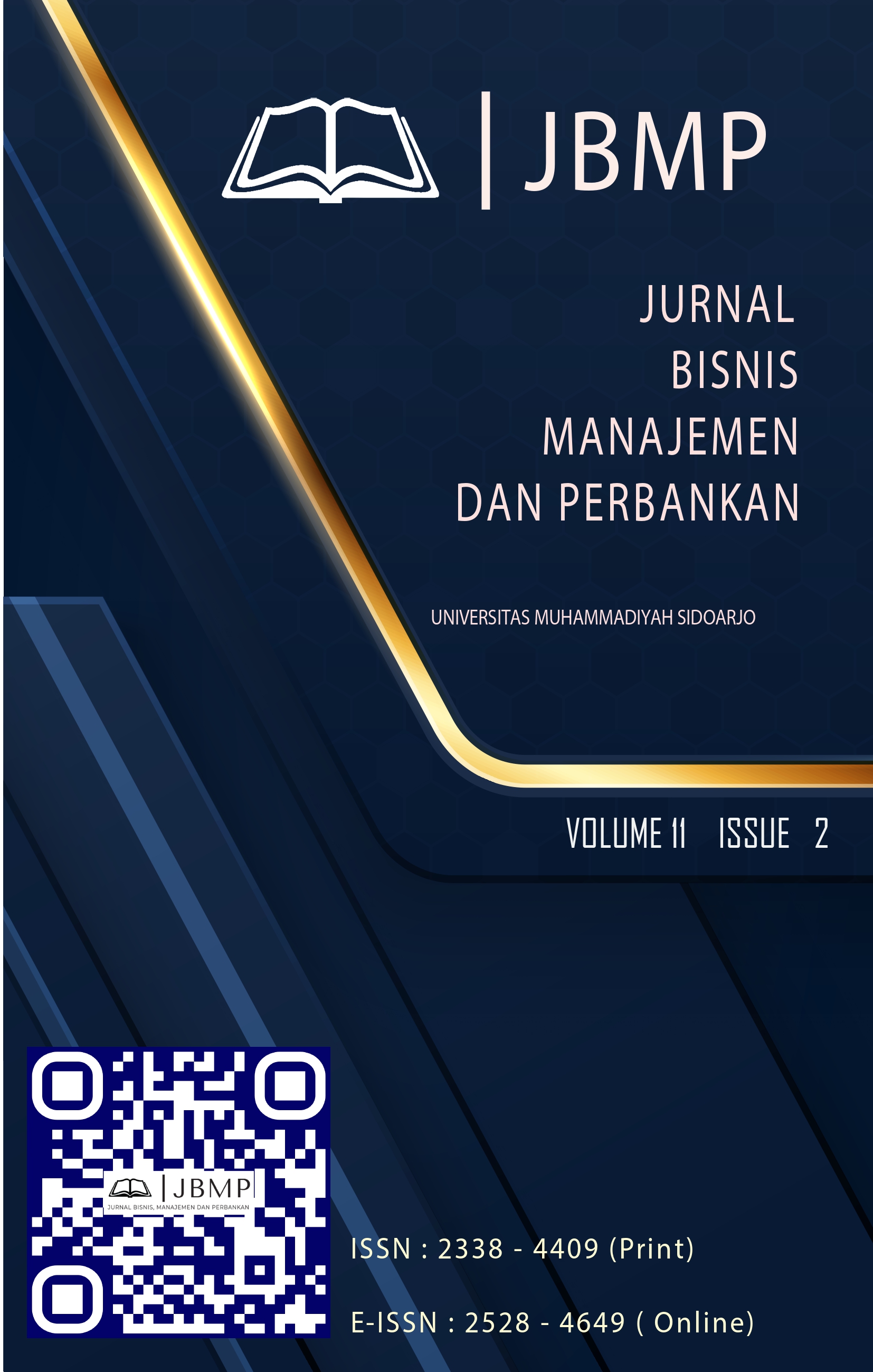Performance or Pleasure: Which Counts More for Virtual-Influencer Adoption in Indonesia?
Kinerja atau Kenikmatan: Mana yang Lebih Penting dalam Penerapan Influencer Virtual di Indonesia?
DOI:
https://doi.org/10.21070/jbmp.v11i2.2168Keywords:
Performance Expectancy, Positive Emotion, Virtual Influencers, Technology AcceptanceAbstract
In mobile-first collectivistic markets such as Indonesia, research has not yet clarified how consumers respond to virtual influencers (VIs), AI-driven characters that sell, entertain, and chat in parasocial spaces. Filling this gap is important because Indonesia is projected to become Asia’s fastest-growing e-commerce arena, valued at roughly ninety-five billion US dollars. We adapted the Artificial Intelligence Device Use Acceptance (AIDUA) model and surveyed 235 Instagram users aged 18 to 35 years who follow at least one VI. After pretesting, the final PLS-SEM model satisfied all reliability (CR ≥ 0.89) and convergent validity (AVE ≥ 0.73) thresholds and explained 37 percent of the variance in willingness to accept VIs. Positive emotion emerged as the strongest driver (β = 0.51, p < 0.001). Performance expectancy showed both a direct effect (β = 0.12, p < 0.05) and an indirect effect through emotion, whereas effort expectancy influenced acceptance solely through emotion. Perceived risk and social influence were not significant, confirming that feeling rather than function guides VI persuasion among young Indonesians. Brands should therefore pair clear decision support cues with local humor, everyday Bahasa, and low-friction interfaces to spark joy and reduce novelty skepticism, a strategy likely to accelerate VI adoption in other collectivistic mobile-centric economies.
References
Armstrong, J. S., & Overton, T. S. (1977). Estimating Nonresponse Bias in Mail Surveys. Journal of Marketing Research, 14(3), 396–402. doi: 10.1177/002224377701400320
Belanche, D., Casaló, L. V., & Flavián, M. (2024). Human versus virtual influences, a comparative study. Journal of Business Research, 173, 114493. doi: 10.1016/j.jbusres.2023.114493
Byun, K. J., & Ahn, S. J. (Grace). (2023). A Systematic Review of Virtual Influencers: Similarities and Differences between Human and Virtual Influencers in Interactive Advertising. Journal of Interactive Advertising, 23(4), 293–306. doi: 10.1080/15252019.2023.2236102
Chen, Z., & Zhang, W. (2022). Consumer responses to AI influencers: The mediating role of perceived authenticity. Journal of Retailing and Consumer Services, 68.
Chi, N. T. K., & Hoang, V. N. (2023). Investigating customer trust in artificial intelligence: The role of anthropomorphism, empathy response, and interaction. CAAI Transactions on Intelligence Technology, 8(1), 260–273.
Chin, W. W. (1998). The partial least squares approach to structural equation modelingIn G. A. Marcoulides (Ed.). Lawrence Erlbaum Associates: Modern methods for business research .
Christanti, C., & Kembau, A. S. (2024). PENGARUH STRATEGI PEMASARAN KONTEN DAN AFILIASI TERHADAP PEMBELIAN IMPULSIF: PERAN MEDIASI PEMASARAN VIRAL DAN KEPERCAYAAN. Modus, 36(2), 198–223. doi: 10.24002/modus.v36i2.8787
Fahmi, F. Z., McCann, P., & Koster, S. (2017). Creative economy policy in developing countries: The case of Indonesia. Urban Studies, 54(6), 1367–1384. doi: 10.1177/0042098015620529
Feng, Y., Chen, H., & Xie, Q. (2024). AI influencers in advertising: The role of AI influencer-related attributes in shaping consumer attitudes, consumer trust, and perceived influencer–product fit. Journal of Interactive Advertising, 24(1), 26–47.
Firellsya, G., Kembau, A. S., Bernanda, D. Y., & Christin, L. (2024). Tren Belanja Online Wanita Gen-Z: Eksplorasi Faktor-Faktor di Balik Dominasi Wanita Gen-Z pada Platform Shopee Menggunakan Model UTAUT2. Jurnal Informatika Ekonomi Bisnis, 184–196. doi: 10.37034/infeb.v6i1.826
Fornell, C., & Larcker, D. F. (1981). Evaluating Structural Equation Models with Unobservable Variables and Measurement Error. Journal of Marketing Research, 18(1), 39–50. doi: 10.1177/002224378101800104
Garson, G. D. (2016). Partial least squares: Regression and structural equation models. Statistical Associates Publishers.
Gursoy, D., Chi, O. H., Lu, L., & Nunkoo, R. (2019). Consumers acceptance of artificially intelligent (AI) device use in service delivery. International Journal of Information Management, 49, 157–169. doi: 10.1016/j.ijinfomgt.2019.03.008
Hair, J. F., Risher, J. J., Sarstedt, M., & Ringle, C. M. (2019). When to use and how to report the results of PLS-SEM. European Business Review, 31(1), 2–24. doi: 10.1108/EBR-11-2018-0203
Henseler, J., Ringle, C. M., & Sarstedt, M. (2015). A new criterion for assessing discriminant validity in variance-based structural equation modeling. Journal of the Academy of Marketing Science, 43(1), 115–135. doi: 10.1007/s11747-014-0403-8
Hinduan, Z. R., Anggraeni, A., & Agia, M. I. (2020). The New Generation Z in Asia: Dynamics, Differences, Digitalisation (E. Gentina & E. Parry, Eds.). Emerald Publishing Limited. doi: 10.1108/9781800432208
Jhawar, A., Kumar, P., & Varshney, S. (2023). The emergence of virtual influencers: A shift in the influencer marketing paradigm. Young Consumers, 24(4), 468–484.
Kembau, A. S., Kolondam, A., & Mandey, N. H. J. (2024). VIRTUAL INFLUENCERS AND DIGITAL ENGAGEMENT. Jurnal Manajemen Pemasaran, 18(2), 123–136. doi: 10.9744/pemasaran.18.2.123-136
Kock, N. (2015). Common Method Bias in PLS-SEM. International Journal of E-Collaboration, 11(4), 1–10. doi: 10.4018/ijec.2015100101
Pandey, P., & Rai, A. K. (2023). Consumer adoption of AI-powered virtual assistants: An integrated SEM–ANN model. FIIB Business Review.
Podsakoff, P. M., MacKenzie, S. B., Lee, J.-Y., & Podsakoff, N. P. (2003). Common method biases in behavioral research: A critical review of the literature and recommended remedies. Journal of Applied Psychology, 88(5), 879–903. doi: 10.1037/0021-9010.88.5.879
Preacher, K. J., & Hayes, A. F. (2008). Asymptotic and resampling strategies for assessing and comparing indirect effects in multiple mediator models. Behavior Research Methods, 40(3), 879–891. doi: 10.3758/BRM.40.3.879
Purwanto, E., & Loisa, J. (2020). ). The intention and use behaviour of the mobile banking system in Indonesia: UTAUT model. Technology Reports of Kansai University, 62(06), 27757–2767.
Saud, M., Ida, R., Mashud, M., Yousaf, F. N., & Ashfaq, A. (2023). Cultural dynamics of digital space: Democracy, civic engagement and youth participation in virtual spheres. International Journal of Intercultural Relations, 97, 101904. doi: 10.1016/j.ijintrel.2023.101904
Setyaningrum, R., Wijaya, A. R., & Subagyo, S. (2022). The Characteristics of Society in Indonesian Based on the Hofstede Cultural Dimensions: Measuring the Five Indonesian Island. International Journal of Cultural and Art Studies, 6(1), 60–74. doi: 10.32734/ijcas.v6i1.8720
Sorosrungruang, T., Ameen, N., & Hackley, C. (2024). How real is real enough? Unveiling the diverse power of generative AI‐enabled virtual influencers and the dynamics of human responses. Psychology & Marketing, 41(12), 3124–3143. doi: 10.1002/mar.22105
Vafaei-Zadeh, A., Nikbin, D., Wong, S. L., & Hanifah, H. (2024). Investigating factors influencing AI customer-service adoption: An SOR–TTF approach. . Asia Pacific Journal of Marketing and Logistics.
Venkatesh, Thong, & Xu. (2012). Consumer Acceptance and Use of Information Technology: Extending the Unified Theory of Acceptance and Use of Technology. MIS Quarterly, 36(1), 157. doi: 10.2307/41410412
Yu, J., Dickinger, A., So, K. K. F., & Egger, R. (2024). Artificial intelligence-generated virtual influencer: Examining the effects of emotional display on user engagement. Journal of Retailing and Consumer Services, 76, 103560. doi: 10.1016/j.jretconser.2023.103560
Zhang, S., Meng, Z., Chen, B., Yang, X., & Zhao, X. (2021). Motivation, Social Emotion, and the Acceptance of Artificial Intelligence Virtual Assistants—Trust-Based Mediating Effects. Frontiers in Psychology, 12. doi: 10.3389/fpsyg.2021.728495
Downloads
Published
Issue
Section
License
Copyright (c) 2025 Agung Stefanus Kembau, Christian Haposan Pangaribuan, Arief Perdana Kumaat, Devi Yurisca Bernanda, Fidelia Novena Doa

This work is licensed under a Creative Commons Attribution 4.0 International License.








